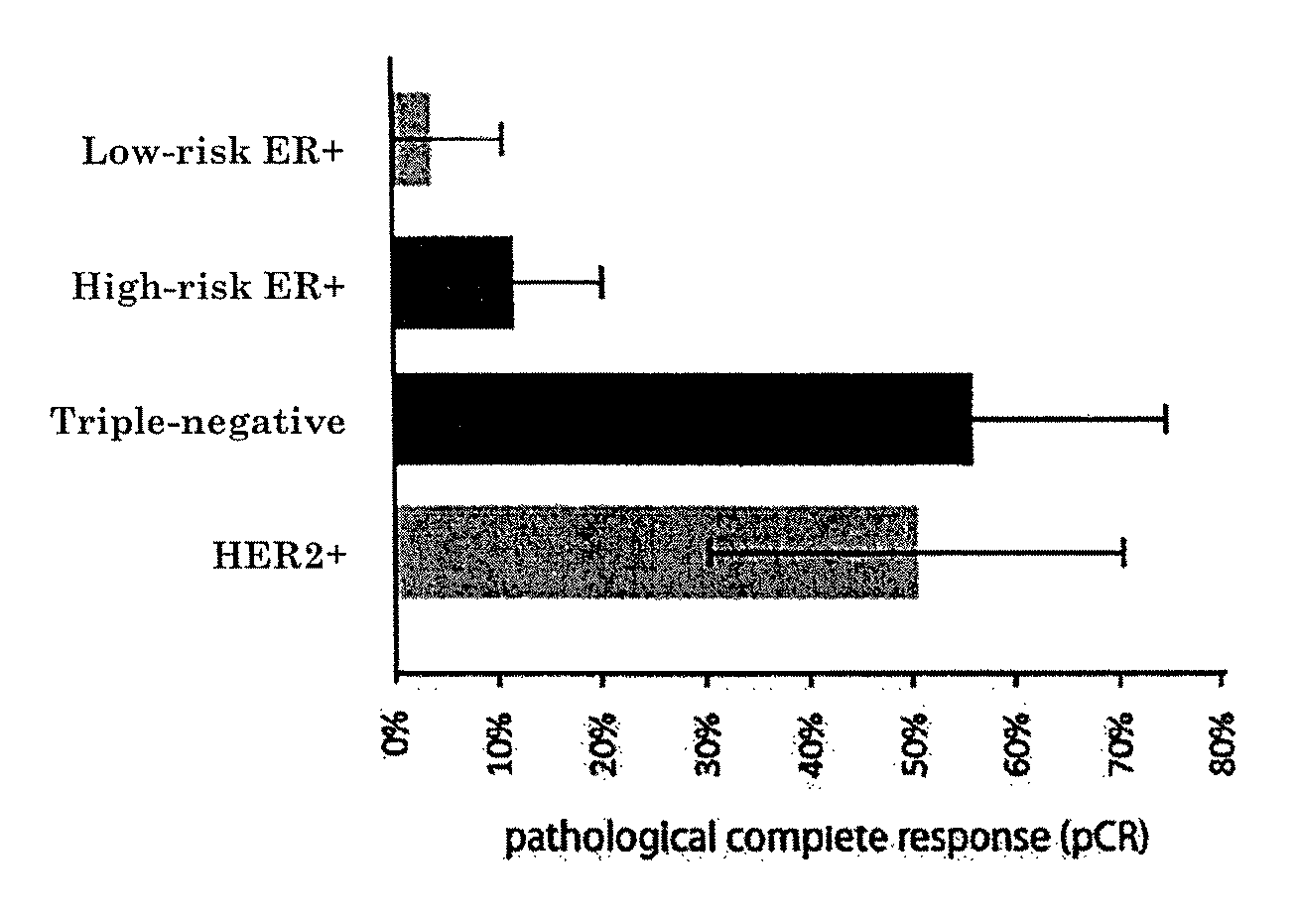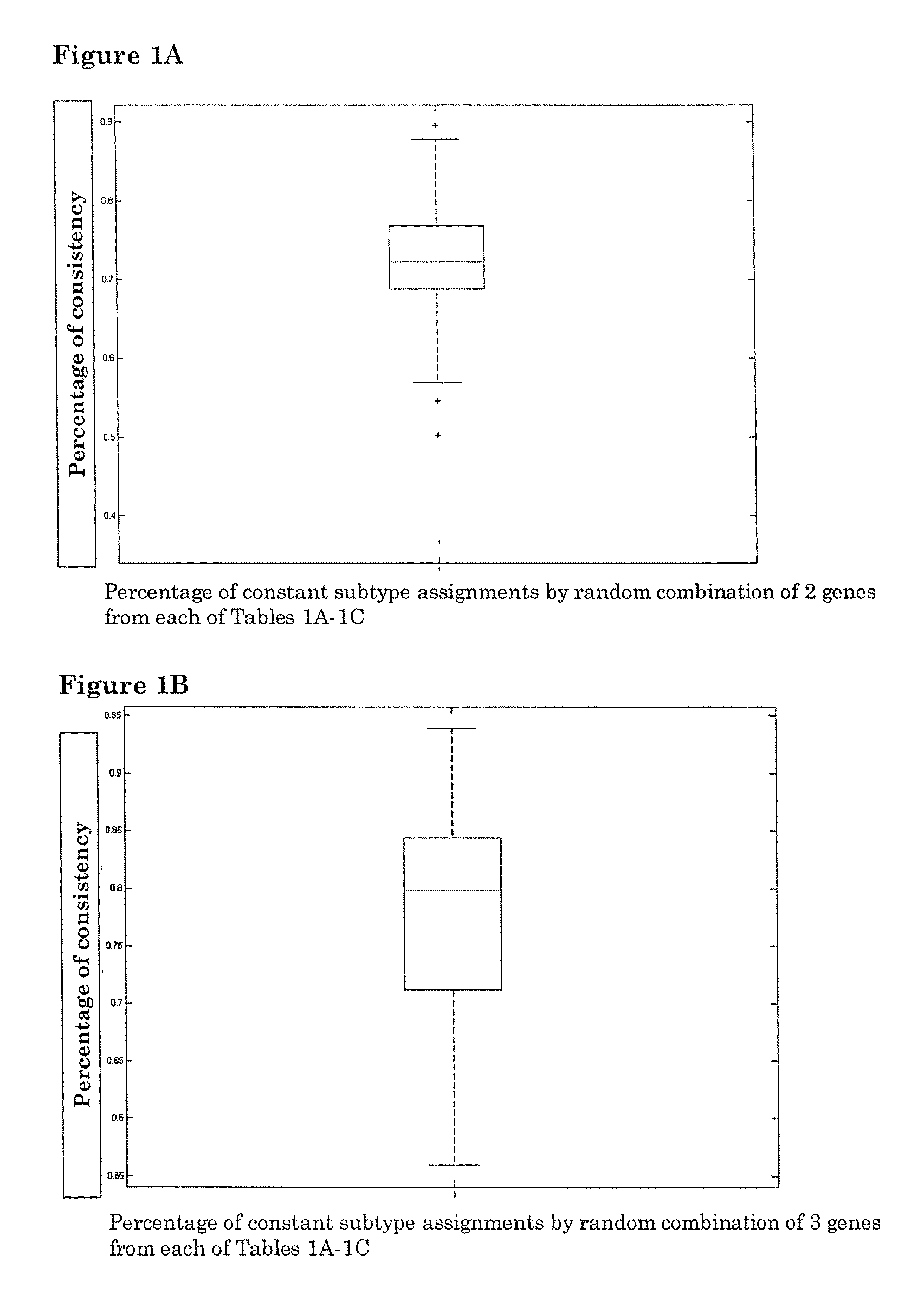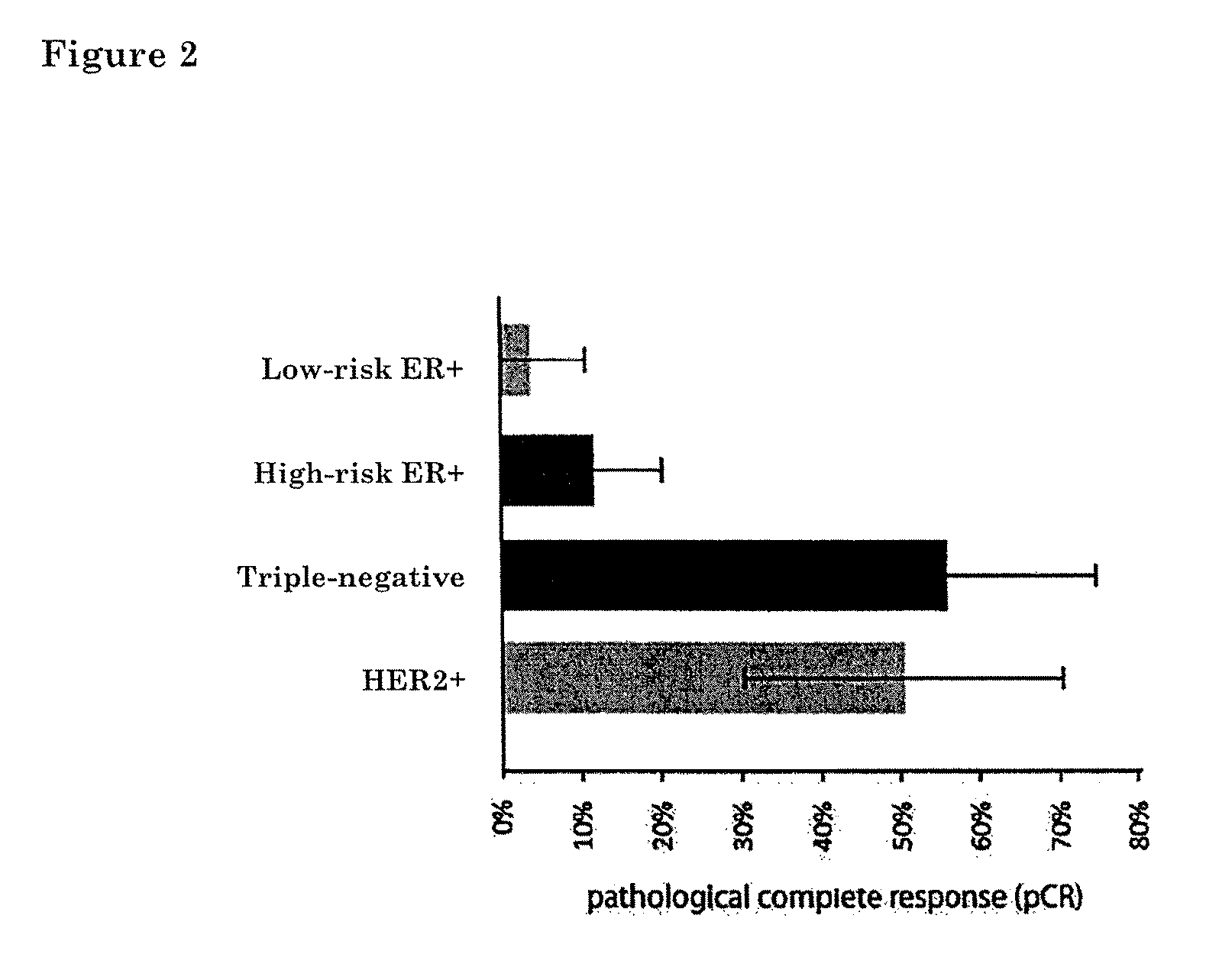Means and methods for molecular classification of breast cancer
a breast cancer and molecular classification technology, applied in the field of oncology, can solve the problem that both methods have an inherent uncertainty in predicting whether
- Summary
- Abstract
- Description
- Claims
- Application Information
AI Technical Summary
Problems solved by technology
Method used
Image
Examples
example 1
Material and Methods
Patient Selection
[0061]A total of 1,212 patient specimens from 6 different studies were analyzed (an overview of the different cohorts used in this study can be found in Table 2). Cohort 1, described in van de Vijver et al. [van de Vijver et al. N Engl J Med 2002, 347:1999-2009], was used for the development (cohort 1a) and initial validation (cohort 1b) of the molecular subtyping profile. Cohort 1a samples (n=200) were selected for their concordance between classification based on their ER, PR and HER2 status by immunohistochemistry (IHC) and by TARGETPRINT(R) microarray based single gene readout (see below). Cohort 1b samples (n=95) had a discordance between IHC and TargetPrint ER, PR or HER2 determination. Cohort 2 consisted of 274 early-stage breast cancer samples from a consecutive series of patients seen at the Netherlands Cancer Institute and treated with adjuvant tamoxifen monotherapy [Kok et al. 2010 (submitted)]. Cohort 3 (n=100) was a group of patients...
example 2
[0076]Molecular Subtyping Profile (MSP) can correctly classify subtypes with a minimal number of 2 genes from each subtype gene list: a random combination of 2 genes from the ER+ subtype gene list in Table 1A, a random combination of 2 genes from triple-negative subtype gene list in Table 1B and PERLD1 and SYCP3 from Her2 subtype gene list in Table 1C. A total of 200 random combinations were simulated. For each random combination, the assignments of molecular subtypes are compared with the assignment of molecular subtypes by an 80-genes molecular subtype profile listed in table 3. FIG. 1A shows the classification performances of 200 random combinations. Median consistency of 200 random combinations is 72.2%.
[0077]Molecular Subtyping Profile (MSP) can correctly classify subtypes with a minimal number of 3 genes from each subtype gene list: a random combination of 3 genes from ER+ subtype gene list in Table 1A, a random combination of 3 genes from triple-negative subtype gene list in ...
example 3
[0078]Molecular Subtyping Profile (MSP) can be used to discriminate between triple negative, ER+ and HER2-type breast cancer. An ER+ type breast cancer is likely to have a functional estrogen receptor alpha. Conversely, a triple-negative type tumor would be expected to have a non-functional estrogen receptor alpha. One might therefore expect that breast tumors that are estrogen receptor alpha positive by immunohistochemistry (IHC), but triple negative by MSP-analysis, harbour a defective estrogen receptor.
[0079]To test this idea directly, we searched our patient database for patients that were ERalpha positive by IHC, but triple-negative type by MSP. We identified a patient (60 year old with 9 mm, moderately differentiated, HER2 negative, ER / PR>90% by IHC invasive ductal carcinoma) which had undergone both a MammaPrint(R), TargetPrint(R) and MSP test. She had MammaPrint high risk result. This patient was also ER-positive by TargetPrint, but triple-negative by MSP. This suggested tha...
PUM
| Property | Measurement | Unit |
|---|---|---|
| temperatures | aaaaa | aaaaa |
| temperatures | aaaaa | aaaaa |
| temperatures | aaaaa | aaaaa |
Abstract
Description
Claims
Application Information
 Login to View More
Login to View More - R&D
- Intellectual Property
- Life Sciences
- Materials
- Tech Scout
- Unparalleled Data Quality
- Higher Quality Content
- 60% Fewer Hallucinations
Browse by: Latest US Patents, China's latest patents, Technical Efficacy Thesaurus, Application Domain, Technology Topic, Popular Technical Reports.
© 2025 PatSnap. All rights reserved.Legal|Privacy policy|Modern Slavery Act Transparency Statement|Sitemap|About US| Contact US: help@patsnap.com



